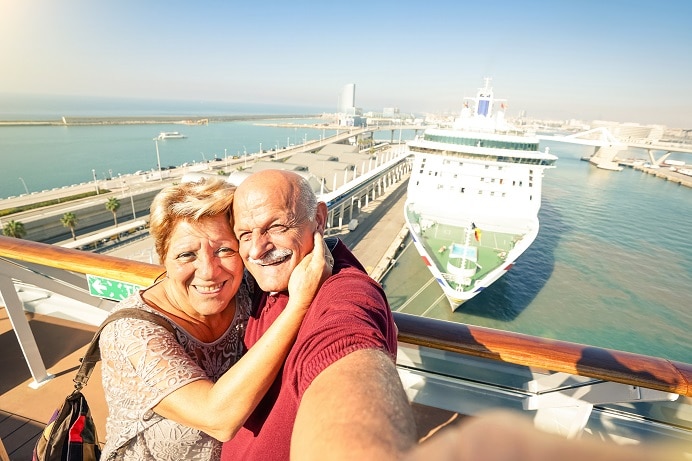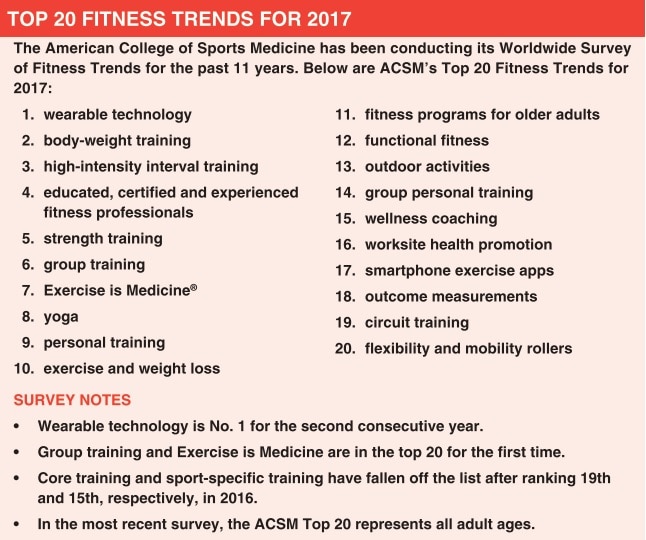Take Advantage of Boomer Trends
Look for answers both inside and outside the fitness industry.

How can you take advantage of trends in and out of the fitness industry to best serve your baby boomer clients? Before answering, let's blitz through some brief history. Which generation pushed, pulled and grapevined adult exercise into the mainstream? If you knew it was baby boomers, you have been paying attention.
Your boomer members and class participants—now aged 53–71—were the first generation to keep exercising after high school and college. Back in the 1970s and 1980s, when they were in their 20s, they popularized dance aerobics and jogging. Several decades later, they are still working out, still setting trends and still looking for the best ways to meet their changing needs.
Today they are trendsetters both in fitness and in other domains. By considering significant boomer behaviors outside the fitness industry, you can capitalize on interesting discoveries as fitness insiders.
First let's consider trends boomers are driving in fitness. The American College of Sports Medicine's annual survey of the Top 20 Fitness Trends for 2017 (see the sidebar) reveals a host of forces boomer exercisers are affecting (especially 11 and 12, "fitness programs for older adults" and "functional fitness").
But many interesting questions arise from outside the fitness industry. For example, what does AARP see as a big influence on midlifers in 2017? What is the American Psychological Association (APA) reporting about older adults' mental health? How does the fitness level of people over 50 affect their lives when they are not exercising?
Whether you are a trainer, manager or group leader, it will pay to think about action plans you can extrapolate from the answers to such questions, and other, similar ones.
High Stress: It's Everywhere
According to the APA, U.S. adults are more and more stressed out, with a particular increase in people reporting "extreme stress," and 24% saying they were highly stressed in 2015 compared with 18% in 2014. With stress on the rise, trends 7 and 8 on the ACSM list (Exercise is Medicine® and yoga) reveal a clear opportunity for fit pros who can apply yoga, stress‐reducing programs or mindfulness techniques to midlifers' specific needs.
Incidentally, Exercise is Medicine is appearing in ACSM's Top 20 for the first time this year. This global initiative encourages physicians to prescribe physical activity as a health or medical treatment. The initiative also urges health and medical professionals to work more with fitness professionals.
Acting on High Stress
Smart fitness professionals who want more referrals from the medical community can emphasize the anti-stress aspects of their services. If you offer yoga classes, meditation or other relaxation programs, you have a target market of consumers who need help dealing with escalating stress levels, and you have a professional cadre looking to refer their patients.
Boomers Are Going Places
AARP says "99% of baby boomers will take at least one leisure trip in 2017." Impressively, AARP survey respondents expect to average five or more trips throughout the year. Those are huge numbers! If pretty much all middle-agers are planning a trip, that means your boomer participants and clients need to be "travel ready."
The National Association of Baby Boomer Women (NABBW) confirms that "Passion, Play, Travel & Adventure" are big with this age group. Boomers want to be on the go, and they have the money and time to make it happen. But do they have the physical ability? Given that AARP's report also cites health as a barrier for 34% of these eager travelers, you have enormous opportunity here.
Helping Them Travel
Woo people into your programs and classes by linking your services to their travel goals. Design functional exercises that make it easier for boomers to climb stairs, lift luggage overhead, walk for hours, hustle to catch trains and planes, stabilize themselves on cruise ships, and hike uneven trails in the national parks. Use language that connects workout moves with upcoming client adventures. Almost any training that gets your 53- to 71-year-olds more fit for the rigors of travel should be a winner.
They Want to Stay Young
Baby boomers have certainly been accused of trying to stay "forever young." Perhaps you—like the NABBW—interpret this as a desire to pursue "Health, Vitality & Wellness." Maybe you see this as a vain, fantastical chase for eternal youth. Regardless, you have to admit that baby boomers are not aging the way their parents did. They want and expect more years in their life and more life in their years.
But boomers' motivations for exercise have shifted. ACSM lists "exercise and weight loss" in the 10th spot. While this trend may be true for all age groups considered in ACSM's survey, is weight loss key for the middle-aged exerciser? This is where combining trends from within and beyond the industry becomes so revelatory.
Yes, baby boomers are keenly interested in losing weight. But according to Vibrant Nation (VN), an online community for midlife women, the primary motivator for 78% of respondents is that they "want to have energy." That's another huge shift in understanding what drives this cohort. Reflect a moment here: Gaining energy ranked higher than losing weight, even though 40% of postmenopausal women feel more overweight than they did before menopause, according to a VN survey.
The flip side of this trend is that 24% of respondents cited lack of energy as their biggest obstacle to leading a healthy life.
Helping Them Feel Young
If you want to attract women over 50, reposition your message to highlight energy boosts instead of (or in addition to) weight loss. Focus on how exercise will make your clients feel rather than how it could make them look. Anticipate "lack of energy" as
a barrier to exercise, and point to the energy-enhancing benefits of movement.
Tech and the Sandwich Generation
It's not only energy that boomer women say they lack; it's also time. Midlifers of both genders are caregivers, grandparents, parents, workers and delayed retirees.
Now note that "wearable technology" sits atop the ACSM's list for the second year in a row. Wearable technology includes activity trackers, smartwatches, heart rate monitors, GPS tracking devices, smart eyeglasses, smart fabrics and interactive textiles. This trend is too big for most trainers, teachers and fitness leaders to take on whole. Imagine trying to learn about every fitness app! The trick is to narrow your scope. What in this top trend applies most to over-50 exerciser?
First, ignore the myth that people in this age group are not tech-savvy. They are willing and able to handle technology, especially with your professional guidance. And friends and family are increasingly important to boomers, the NABBW survey reminds us. Once we couple wearable technology with the Sandwich Generation trend, we can see ways to help boomer clients.
Technology for caregiving and monitoring medical details is of particular interest to over-50 exercisers. They worry that a distant, elderly parent has fallen. They wonder whether Mom is taking her meds. Is Dad's heart monitor in place? Has Mom wandered off and gotten lost because of dementia? Could Dad not be answering his phone because he's unconscious? Medical, caregiving wearable technology can answer these questions and more.
Working With Wearable Tech
Why not become the resident expert in this niche? Imagine what a great resource you would be if you could compare, review and recommend the "right" wearable technology for clients who are caregivers. Would specializing in this market allow you to bring in more income through affiliate sales or pro-shop commissions? Could such expertise translate into presentations for your community or facility? You'd have a client for life if you helped that client save a loved one's life.
Put on Your Thinking Cap
The potential for acting on these trends is as expansive as your imagination. When the right hand (fitness trends) combines with the left hand (boomer trends outside fitness), a lot of exciting, timely, effective work gets accomplished.
Remember that baby boomers hold more than 90% of the country's net worth and account for 78% of all financial assets, according to NABBW. They want to spend some of those assets reducing stress, traveling, gaining energy, staying youthful, monitoring elderly family and generally getting their aging bodies to match their vibrant minds. Harness these trends and you will thrive serving the ever-present, never-say-“die” baby boomer exerciser.
Kymberly Williams-Evans, MA
Kymberly Williams-Evans, PhD (ABD) has been a fitness professional on four continents, in four languages, for four decades on land, at sea and across the airwaves. After years of co-hosting an online radio program (Active Aging for BoomChickaBoomers), she reports having interviewed scads of great guests and two really bad ones.






